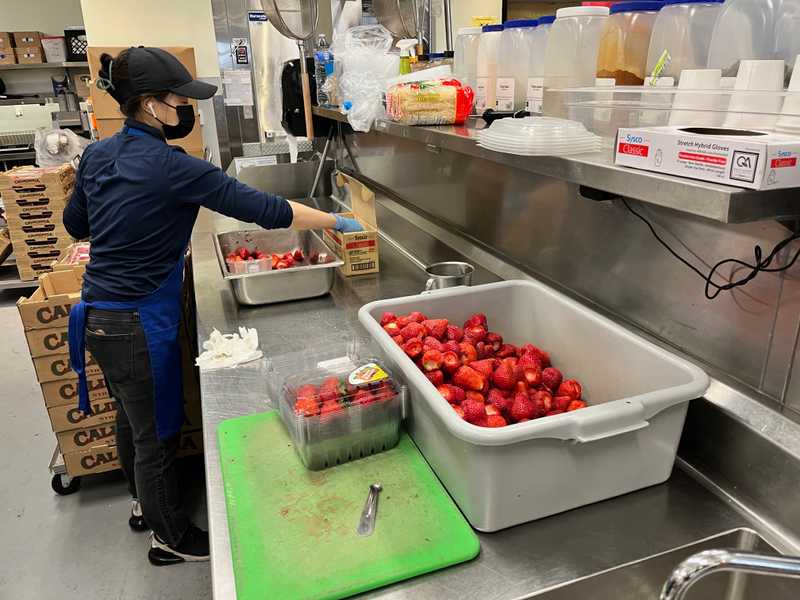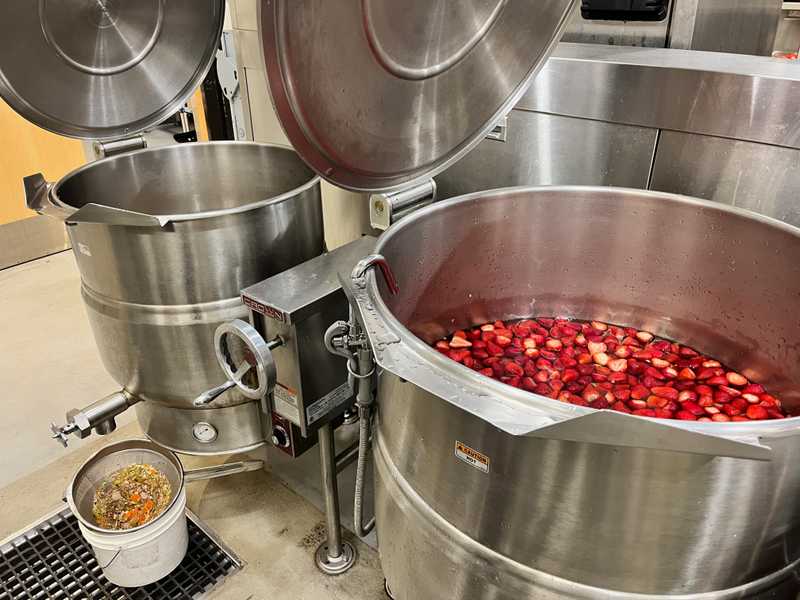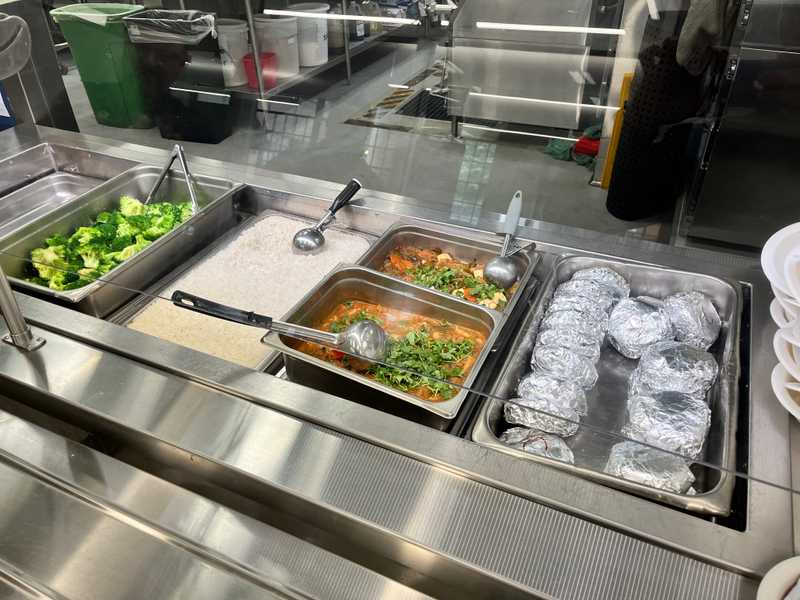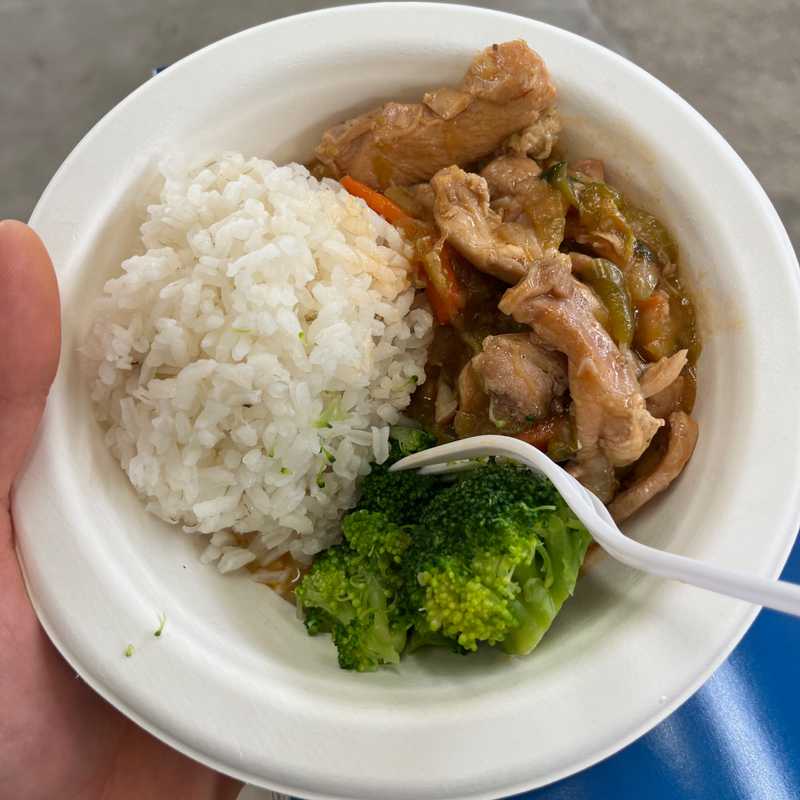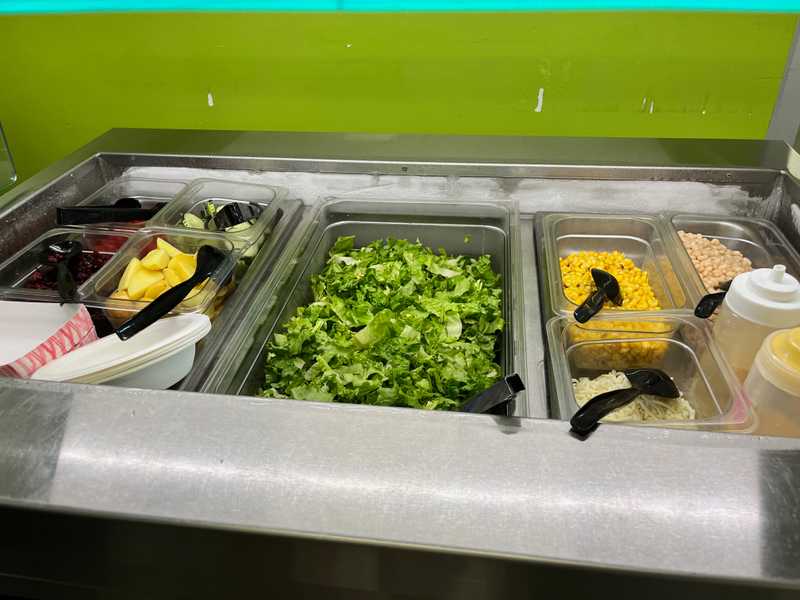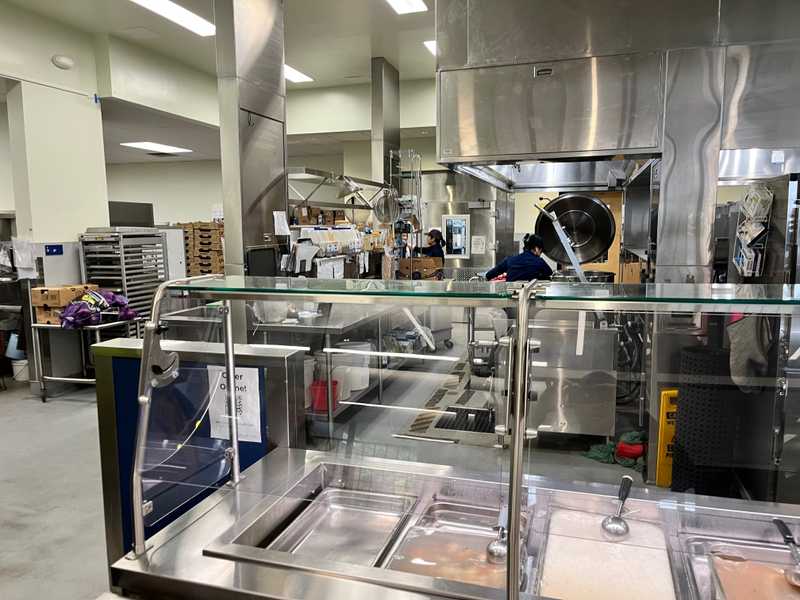How Prop A is Improving What SF Students Eat
June 23, 2025
Last November, San Francisco voters passed Prop A which will help fund the construction of a central kitchen facility for SFUSD students. While the facility is still in the very early stages, SFUSD has already began to transition from a completely outsourced school lunch model to now cooking meals in schools across the district.
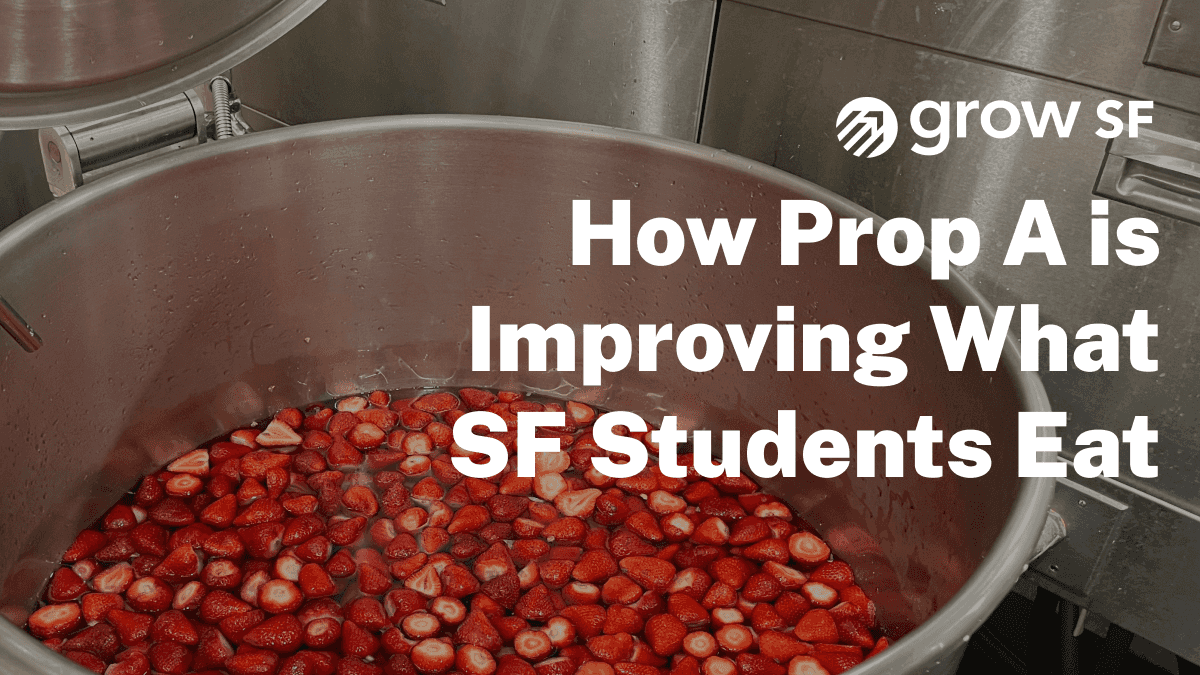
San Francisco public school kids are now getting healthier lunches, cooked locally, thanks to Prop A from November 2024. In 2009, SFUSD just had five cooking staff and primarily served frozen meals shipped in from Chicago, heated and served by about 275 dining staff. But now, thanks to investments made possible by Prop A and additional school bonds, the district cooks 40% of school meals, with the remaining 60% provided by Revolution Foods, a local vendor based in Hayward.
Prop A funds will help SFUSD prepare all of its meals from scratch, without having to work with an external vendor. Most of these meals will be prepared in a central SFUSD kitchen which will cook meals for schools that do not have a kitchen on-site, like elementary schools. Schools that do have a kitchen will get the necessary upgrades to fully prepare meals from scratch.
The National School Lunch Program, which began in 1946, required schools to build on-site kitchen facilities to prepare school meals. But many SFUSD schools were built prior to 1946, like Lincoln and Washington High Schools, Everett Middle School, and West Portal Elementary School and many never got kitchen upgrades after the program began., We will finally solve a long-standing problem for our kids.
It turns out San Francisco actually has a long history of trying to get a central kitchen for our school district. The first time that San Franciscans voted on a central kitchen was in 1974, when Prop N funded a “Centralized Nutrition Complex” that would prepare 42,000 meals a day. The project, however, sank due to a political fight between Superintendent Robert Alioto and the Board of Education. The superintendent had wanted to fund the food hub through a special tax override, but the Board insisted on keeping the budget balanced without new taxes. The Board ended up winning out, and the $7 million in cuts that they approved included all of the central kitchen budget.
GrowSF recently got a tour of the McAteer Culinary Center which is located on the campus of Academy High School and Ruth Asawa School of the Arts. McAteer is one of the newly remodled scratch kitchens that SFUSD will be using to cook meals for students on-site. Currently, it cooks for all early education schools as well as more than three high schools. It is currently the only kitchen in the district that prepares everything from scratch. We were able to see the changes brought by Prop A and meet the team behind it. We are so glad to see SFUSD moving towards on-site food preparation at last.
So what, specifically, will Prop A do?
Prop A will fund the first phase of SFUSD’s central kitchen, which will store bulk orders of cold and dry food. With the new storage facilities, SFUSD will be able to prepare a much greater volume of food and move away from using an external vendor for school meals.
Before Prop A: The majority of meals occurred through an external food service company, who would manage all relationships with suppliers. Most meals would be heated up in single-use plastic containers. Many schools did not have the facilities to cook, or even the right tools to reheat foods, which is why many kids had to eat out of reheated plastic containers.
After Prop A: SFUSD will begin to cook meals on-site and source from a range of vendors and local food producers. SFUSD will store products in San Francisco and build a distribution system. Instead of single-use plastic, the district will move towards more compostable and recyclable materials. SFUSD will continue to upgrade kitchens at schools and improve their capacity to cook food on-site.
Because Prop A will also be used to do comprehensive safety upgrades, building modernizations, and technology upgrades, SFUSD will need another bond to build the full kitchen facility. So this whole effort will unfold in phases, with the first phase funded by Prop A being the cold and dry storage facilities. Eventually, the full central kitchen will be built to serve 100% of meals for students across the district from freshly prepared raw ingredients.
It is much more efficient and cost effective for SFUSD to cook and prepare meals in-house. Currently SFUSD pays $17 million dollars per year for Revolution Foods to prepare 60% of the school district’s meals. The remaining 40% of meals, the school district prepares at a cost of just $5 million. While the transition to a central kitchen model is expensive due to all of the upfront facility improvements, in the long run it will pay off by providing healthy meals at a lower price.
A centralized kitchen will also have a host of benefits in the way of employment, partnerships with local businesses, and the health and availability of food for our kids. The SFUSD team really stressed that with the new centralized food facility, more food staff will now have year-round employment. When SFUSD was following a contracted vendor model, year-round employment was not an option as food staff would only be hired to serve food during the school year. Now, over the summer the food staff will be getting ready for the coming year by batch preparing shelf stable condiments like jams and soup stock. While we were there, the McAteer kitchen staff were preparing hundreds of gallons of strawberry jam which they were planning on storing for the upcoming school year.
Timeline for building the Central Kitchen
- 2016
- $20M investment in the SNS kitchen and cafeteria upgrades, through the 2016 school bond
- 2024
- Another $200M investment in the SNS kitchen through 2024 Prop A
- Completely rebuilds the main food storage warehouse
- Begins constructing the space for SFUSD central kitchen
- 2026
- Construction will begin on the Student Nutrition Services (SNS) hub, warehouses, and maintenance shops
- Design will be done by Jackson Liles Architecture and construction will be by McCarthy Building
- 2029
- Construction is anticipated to finish on the SNS Hub + Shops
- SFUSD will run another bond to finish the full kitchen build-out, which will begin construction in 2029 (schedule pending additional funding and construction schedule for the first phase)
SFUSD officially began the shift away from a fully-outsourced vendor model in 2018, with the renovation of the McAteer and Marina Middle School kitchens. Given the age of many of the school district’s kitchen facilities, the renovation process across the school district is time-consuming and involved. Since 2018, the school district has remodeled 82 dining spaces (with the input of students) and 4 kitchens. Because of the variety of infrastructure across the district, some schools will continue to have very small “heat and serve” setups, while others will have full kitchen remodels to allow them to prepare all food on site.
What’s the state of school meals today? What will it be in the future?
During our tour at the McAteer Culinary Center, we got a glimpse of what the future of SFUSD school meals will look like across the district. The line-up included BBQ chicken or tofu, served with broccoli and rice. There was also a self-serve salad bar, with lettuce from the McAteer garden. The salad bar has proven to be especially popular with high schoolers, and the district will start rolling out the salad bar to more schools starting in November. Next to the salad bar was a grab-and-go section with yogurt parfaits, grilled cheese, and soup. SFUSD is also experimenting with a QR code order-ahead system for school lunches, collaborating with the SOTA robotics and business club (a school club at School of the Arts) to design this system.
SFUSD has high standards for ingredients in school meals. They prohibit 100% fruit juice, fried or par-fried potatoes, flavored milk, MSG, artificial flavors or colors, high-fructose corn syrup, and preservatives like BHA, BHT, and EDTA. Kitchen staff have to be much more involved with sourcing ingredients, and often have to create condiments from scratch to ensure they comply with the school district’s regulations.
SFUSD will prepare school meals through four kitchen types: 1) the central kitchen, which will do the bulk of meal preparation and be the “hub” for all of the freshly prepared stock ingredients (like jams and soup stocks, for example). 2) The on-site scratch cooking kitchens, which will be full-scale kitchens at select schools for cooking complete meals from raw ingredients every day. 3) Finishing kitchens, which will be facilities that combine scratch cooking with heat-and-serve meals that come from the central kitchen. 4) Warming kitchens, where pre-cooked meals arrive from the central kitchen and are heated before service.
Looking ahead
Prop A is a work in progress, and there's still a long way to go. We are so glad to see the progress SFUSD is making in switching away from an outsourced food vendor and towards serving 100% of meals freshly prepared, on-site. While the full build out of the central kitchen won’t happen for another year or two (and is conditional on another bond), the work has already started to pay off with high student approval of the scratch meals at campuses where they are being served. We wish the whole project could be done with one bond, but we understand that Prop A is spread out across multiple facility improvements and modernization needs. It’s scratch made food like this that will be both healthier and more delicious for students.
Special thanks to Kate Levitt, Jennifer Lebarre, Kaitlyn Robinson, Joshua Davidson, and Phil Halperin.
Sign up for the GrowSF Report
Our weekly roundup of news & Insights
